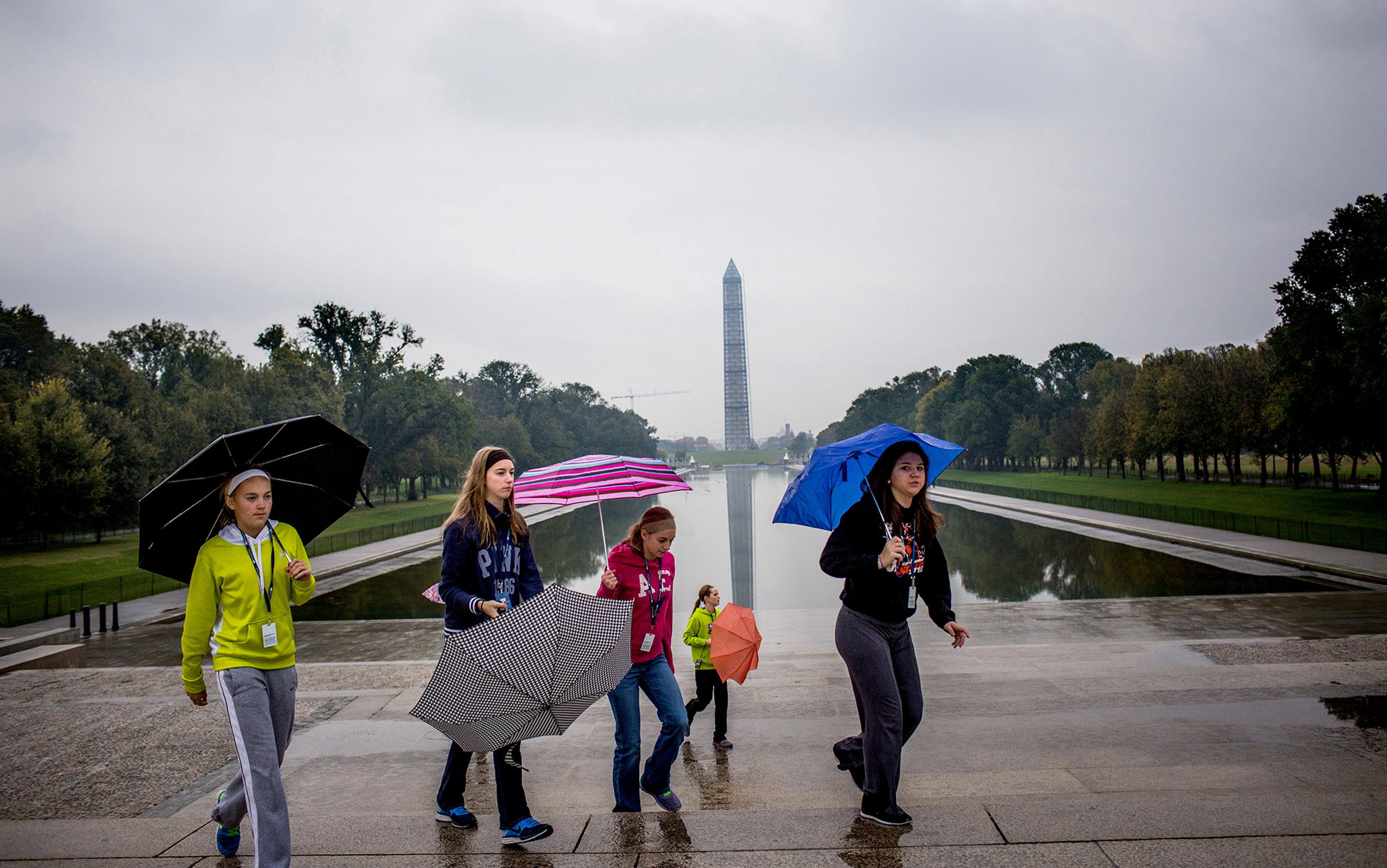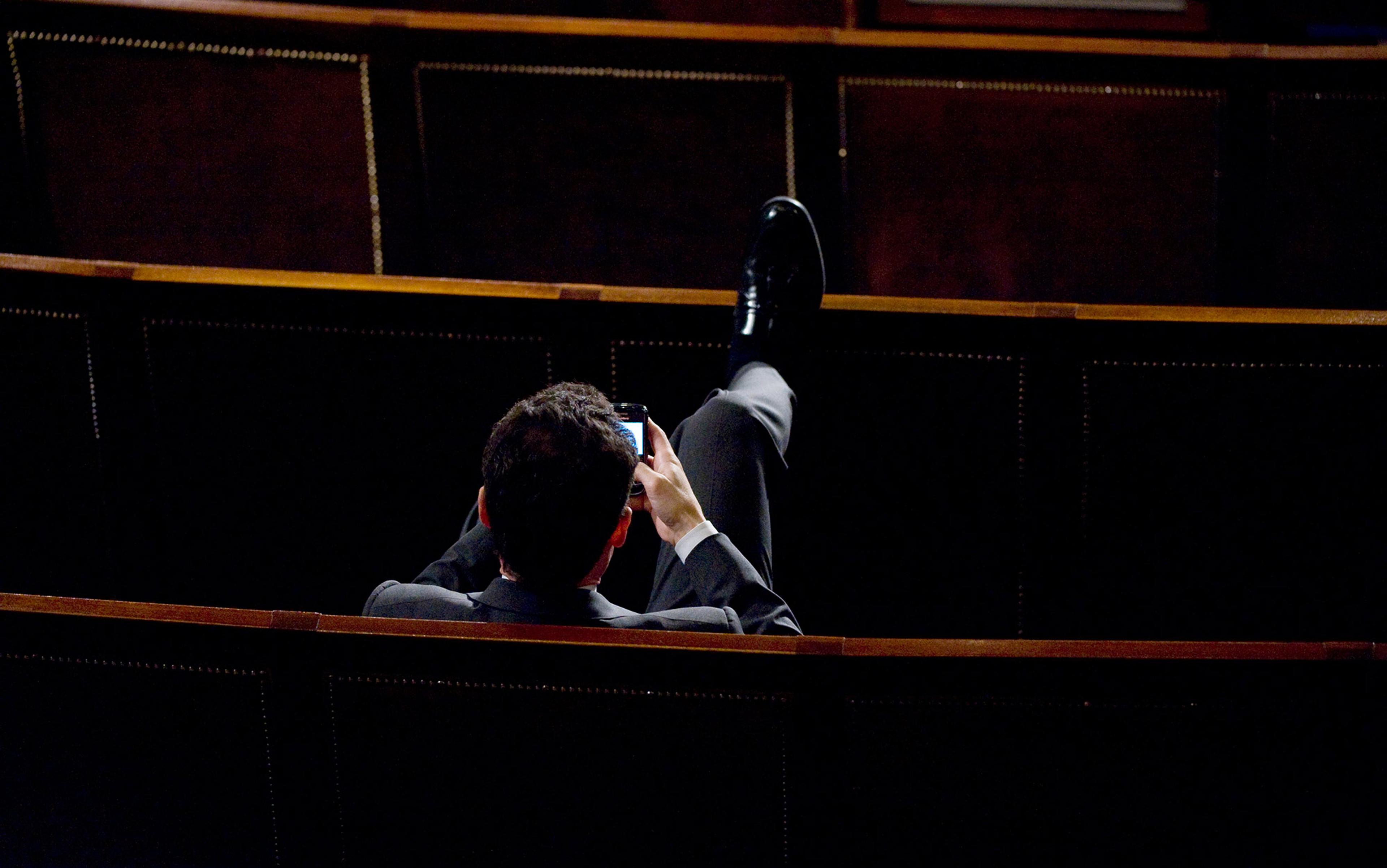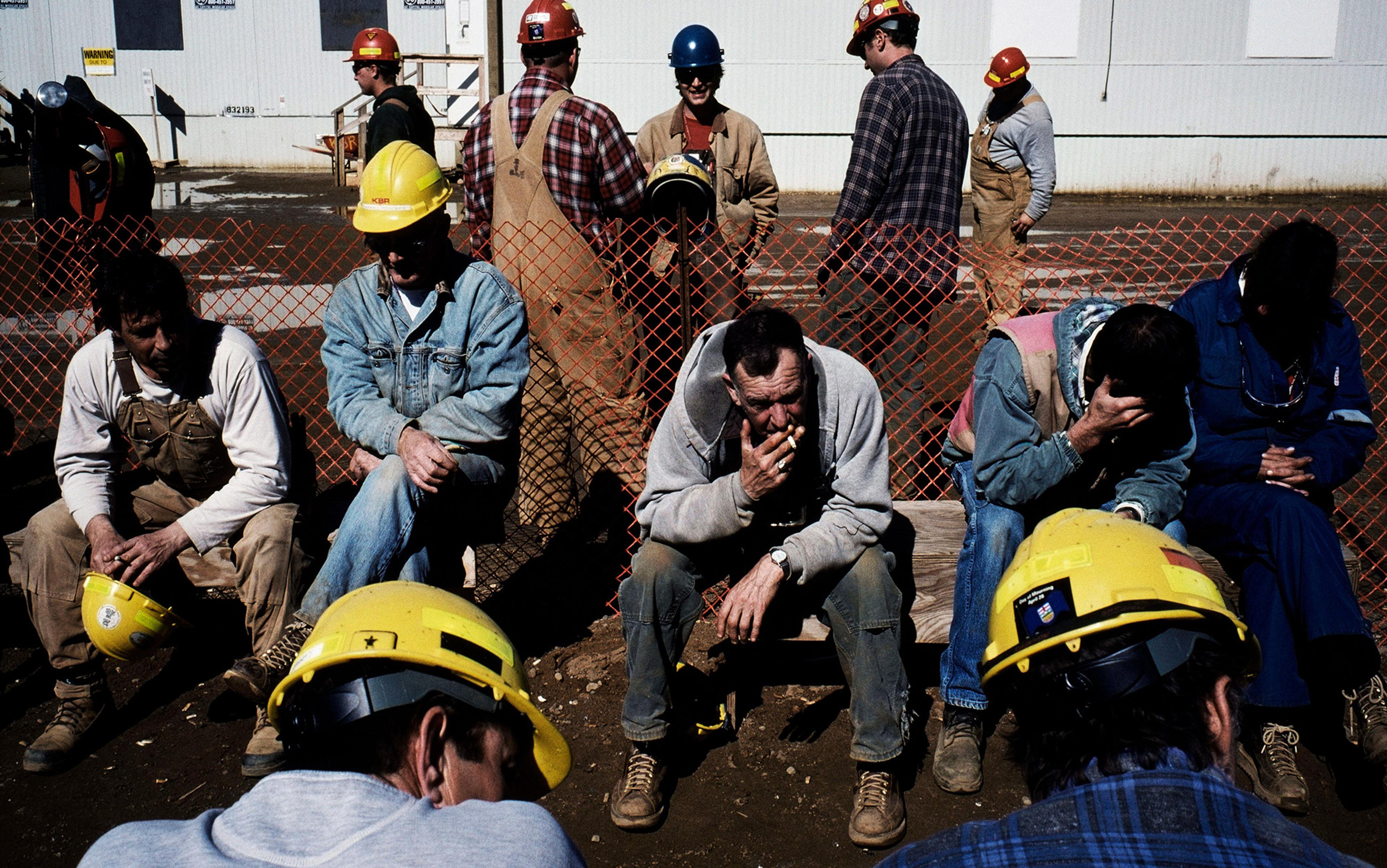In the second episode of I May Destroy You (2020), Michaela Coel’s highly praised TV drama series about the interconnected lives of a group of young Black Londoners, Arabella, a writer and the series protagonist, is sitting in a police station with her friend Kwame and two women assigned to her ‘case’. Arabella (played by Coel) doesn’t know quite what her ‘case’ is: she thinks she’s had her drink spiked the night before, and she has an image in her head of a man, seen from below, sweaty, in a toilet cubicle, accompanied by a thumping sound. One of the women refers to this ‘memory’, and uses the word ‘assault’ too. Arabella corrects her; it’s not a memory, she says, it’s just a ‘thing in my head’. Even she doesn’t know what it is, ‘it might not even be real’ – so shouldn’t they be careful about what words they use? The policewoman agrees, and treads gently.
The man Arabella describes is tall, and has prominent nostrils. The policewoman points out that if someone is above you, they will seem taller, and their nostrils will seem prominent. Can you see the person’s eyes, asks the woman? Yeah, I can see his whole face very clearly, says Arabella. Maybe we can draw him? Who is he looking at, the woman asks. There’s silence; Arabella wells up, and pulls her jumper over her face. It’s her: the man is looking down at her. And now that she realises, she doesn’t want to be seen. She cannot be looked at.
In her book Femininity and Domination (1990), the American philosopher Sandra Lee Bartky argued that shame, unlike guilt – which is related to actions – is ‘called forth by the apprehension of some serious flaw in the self’. Shame, she writes, requires ‘the recognition that I am, in some important sense, as I am seen to be.’ When Arabella covers her face in the police station, what’s being enacted – and what’s unbearable – is her recognition of herself as the woman who has been raped – in the eyes of her rapist, and of the women facing her. She is seeing herself as she is seen.
Shame has long been an instrument of oppression, a way of regulating and policing the behaviour of women, of queer people. And yet shame, as an experience, is always also part of the establishment of a sense of ‘bounded selfhood’, as the English literary scholar Kaye Mitchell puts it in Writing Shame (2020). Shame is individuating; it makes us feel ourselves as ourselves, in our painful individuality. In all its unpleasantness, shame is ‘nothing less than the fundamental sentiment of being a subject’, wrote the Italian philosopher Giorgio Agamben in Remnants of Auschwitz (1998). We experience ourselves as individuals at least partly thanks to the workings of shame – which means that shame is therefore developmentally necessary to the workings of society. It enables the regulation of our behaviour, yet in the process makes us acutely and uncomfortably aware of ourselves ‘as an object for others and a disgraced object at that’, writes Mitchell. If women are doubly objectified in this way, then perhaps shame is intensely, peculiarly individuating for women. This duality – ‘painful individuation’ and ‘uncontrollable relationality’, as the queer theorist Eve Kosofsky Sedgwick put it in Touching Feeling (2002) – results in a contradictory power: ‘one is something in experiencing shame’, as she writes. Shame, as Mitchell argues, ‘bequeaths us selfhood as both gift and burden’.
This ‘gift’ might be of little comfort to those grappling with intensely shame-inducing experiences, such as sexual assault. In fact, one of the defining features of experiencing sexual assault is feeling a shame that no amount of reassurance and insistence – that the victim is not responsible for her assault – can quite erase. In her memoir I Choose Elena (2019), Lucia Osborne-Crowley gives a moving account of a violent sexual assault she underwent as a teenager, and its ensuing aftermath in the form of chronic physical illness. The book is an exploration of the ripples of sexual violence, and of the mind’s ability to force the memory of a terrible experience into the body, and out of conscious awareness, with the Dutch psychiatrist Bessel van der Kolk’s book The Body Keeps the Score (2014) featuring significantly. Osborne-Crowley writes: ‘I was ashamed of admitting that this had happened to me, but then I would remind myself of the story I had created to numb the first shame: that it had never happened at all.’ She also, she writes, ‘felt ashamed of myself for needing help.’ Shame heaps upon shame. And shame circulates and reproduces itself; Osborne-Crowley felt ‘condemned to carry the shame for’ the man (himself guilty of a ‘savage, shameless act’) who assaulted her.
She does, thanks to her own determination and the help of specialists, find some solace and healing. But Osborne-Crowley had spent years, she writes, ‘wishing I could disappear’, trying ‘to erase my life’, always ‘searching for the most profound and permanent act of disappearance’ – to be invisible, to be un-seen, perhaps, covering her face as Arabella does in the police station. Ultimately, Osborne-Crowley refuses this disappearance, and nowhere less so than in the act of writing this book, because ‘to be invisible is to give up the only tangible thing I have to offer: this cautionary tale.’
Memoir writers have often been seen as baring too much, and as trafficking in their hurt
Writing – perhaps especially about sexual assault – is an exercise in the management of shame: not just shame attached to the assault itself, but attached to the act of writing about assault, as well as to writing about oneself. Writers of memoir, particularly women writers of memoir, have long had to negotiate the complex cocktail of feelings elicited by first-person writing, and by the atmosphere of women’s pain. Leslie Jamison, in the essay ‘Grand Unified Theory of Female Pain’ published in her essay collection The Empathy Exams (2014), wrote:
I’m tired of female pain and also tired of people who are tired of it. I know the hurting woman is a cliché but I also know lots of women still hurt. I don’t like the proposition that female wounds have gotten old; I feel wounded by it.
Her collection was published to widespread acclaim, and it’s probably fair to say that readers and publishers have, in the intervening years, definitely not tired of female pain. But Jamison wrote, at the time, of an ethos all around her of being ‘post-wounded’, of an awareness ‘that “woundedness” is overdone and overrated’. Jamison identified with this ethos; ‘I knew better,’ she wrote, ‘we all, it seems, knew better – than to become one of those women who plays victim, lurks around the sickbed, hands her pain out like a business card.’
Memoir writers have often been seen as baring too much, and as trafficking in their hurt – and critics have often reviled them for it. The American author Kathryn Harrison’s memoir The Kiss (1997), about her incestuous relationship with her father, is a finely wrought, probing account of a painful and confusing experience. The book is a beautiful accomplishment yet its reviews reminisced about a bygone era of reticence, and accused her of narcissism, even of having invited the abuse. The English author Rachel Cusk’s memoirs of parenting and divorce – A Life’s Work: On Becoming a Mother (2001) and Aftermath: On Marriage and Separation (2012) – were met with some virulent distaste before her recent rehabilitation as a novelist of curiously detached narration; in 2012, she was described by the Sunday Times columnist Camilla Long as ‘brittle’, endlessly losing herself in ‘whinnying detail’.
I’ve long wondered about the viciousness with which some memoirs by women are met. Perhaps none of us want to identify with the woman who has been wounded – and yet identification, or at least recognition, is often at work in the impulse to read memoir. When women readers encounter the work of women writers detailing painful, shame-inducing experiences (which those readers might also have experienced), they, too, can experience the shame again, doubly, anew. There is a circulation of shame; triggering pangs of identificatory shame in the reader could lead to convulsions of repulsion and spasms of contempt for the woman who’s committing her shame to paper, willingly baring it for all to see. Interest and revulsion might co-exist in one and the same reader. Readers might hunger for first-person accounts of someone’s traumatic experiences, but at the same time feel horrified by them; feel ashamed for the writer, perhaps, for her undisciplined self-exposure. The queer theorist Heather Love, citing the sociologist Erving Goffman’s work, has written about the ambivalence that stigmatised individuals feel ‘when confronted with their “own kind”’. When we experience pangs of identification with the writers we read, especially when we recognise a shared humiliation or a shared hurt, an urge to disidentify can follow hot on its heels, for we want to reassure ourselves that we are, in Jamison’s words, ‘post-wounded’. Are women repelled when we encounter ‘our own kind’?
When critics castigate writers for exposing too much, we’re seeing shame circulating, being handed on, rejected, turned back around, like a baton that no-one wants, but everyone has covertly touched. There hovers, as a consequence, around every piece of personal, so-called ‘confessional’ writing – around every piece of memoir-ish writing – the question: why? What is your justification, your right? And because of this, writers often pre-empt the question themselves, seeking to answer it in political terms – to justify their double transgression (the experience, and the writing of it) – by invoking a greater aim: that of hoping to help other women. Osborne-Crowley acknowledges in I Choose Elena that, as a writer, she can’t change the world; however, ‘What I can change is the size of silence. The weight of it. The way it pulls us under.’ It’s not the story she would have chosen, she writes in one heartbreaking passage, but it’s the one she’s got, and ‘All I can do is tell it, and hope that being honest about what I’ve lost might help women and girls speak up while recovery is still possible for them.’ Writers try to protect themselves from accusations of shamelessness – from tired allegations of narcissism or self-indulgence that stalk first-person writing ad nauseam. They try to pre-empt the possibility that the shame will stick.
In I May Destroy You, Coel explores not only the shame triggered by sexual assault, but what shame gets converted into. In the immediate aftermath of the sexual assault, Arabella has a confusing encounter with Zain, a writer helping her with her book: he removes a condom during sex, unbeknown to Arabella. When she realises – and realises that this too falls under the category of assault – she accuses him publicly of being a rapist. Her friend Terry films her denouncement of him at a writing summit, capturing Zain fleeing the scene. Gifs are made, social media is abuzz. The likes are pouring in, the hearts, the affirmation. Towards the end of the series, Arabella has morphed into a social media hero. People ask her for selfies in the street. Embracing her profile to the hilt, she incites ‘Insta and Twitter wars with rapists and life destroyers every day’ (her words) and interrupts myriad real-life interactions to post online (even while in a doctor’s appointment). Followers ask her to denounce and dox their rapists, turning her into a social media spokesperson for speaking out about sexual assault. Her shame has been converted into defiance, and the defiance becomes armour through which she protects herself, but with which she also hurts her friends.
‘Do you need social media?’ asks her therapist. ‘It’s important that we speak,’ answers Arabella, ‘I have to speak.’ The therapist – calm, kind, sceptical – tells her that the business models of social media companies incentivise speaking, ‘often at the cost of listening’.
Refusing shame, defying it, seem to be self-evident goods. The desire to reject the shame that’s foisted on women gets converted into an insistence on a refusal of that shame. Shouldn’t we take pride in not feeling shame? Shouldn’t we feel ashamed, even, of feeling shame? This might, also, be in play in memoirs working over painful experiences such as sexual assault: a complex balancing act in which writers seek to explore the shame and perhaps exorcise it; to convert it into something else, such as a feminist awakening, an abandonment of stigma and judgment.
It’s a difficult task, however, since, as Sedgwick argued, shame is ‘both peculiarly contagious and peculiarly individuating’. And the benefit to women storytellers of talking about their experiences of rape is unclear, as the English scholar Tanya Serisier has argued in Speaking Out (2018). She cites Don’t: A Woman’s Word (1988), the Canadian author Elly Danica’s account of sexual abuse as a child. Serisier writes that, after the interest in Danica’s story evaporated, it felt as if its impact evaporated too. ‘I and numerous colleagues over the years have been breaking the silence over and over again,’ Danica has said, ‘only to have it subsequently swallow us up again moments after we speak.’ Serisier adds her own evocative image to Danica’s words, writing that ‘Rather than breaking through the silence like a rock through a pane of glass, [Danica’s] speech was more like a rock thrown into a pond, creating a splash and ripples which gradually faded away, leaving the surface of the pond the same as before.’
Why should justice and equality be contingent on a parading of wounds anyway?
Women are asked, most often in the name of feminism, to be proud and defiant; to speak about their terrible, shame-filled experiences precisely in order to refuse shame. Women are asked to display feminist powers of transcendence, defiance, strength – I am not ashamed! – yet all the while they are constantly reminded that someone, somewhere, is only too ready to say: ‘You should be ashamed!’ Women are encouraged to recount and display negative experiences, even as those accounts are all too often disbelieved. Yet they are urged to tell their shame-filled stories, and to tell them with pride.
This was especially palpable in the frenzied #MeToo months of 2017 and 2018: a sense that women are required to display their abjection, as a means of political visibility; a way to educate and inform people, and to change the status quo. I felt it – the pressure to add my voice, my story, to the chorus. I can feel it now, in relation to the murder of the British woman Sarah Everard in March 2021, the way social media galvanises and rewards yet another act of speech, this time about the relentless ways in which women’s movement is constrained, and in which we women manage the risks of violence. It’s undeniably powerful, the accumulation of testimony – and it can make women feel less alone, feel like the world is listening. It might even have positive effects. But the valorisation of speech is not straightforward.
There is still distaste and contempt for women’s ‘confession’, their stories – and a good deal of suspicion about it, too, particularly when it comes to accusations of sexual harm. Women are frequently – still – shamed for this kind of expression. It makes sense, then, that shaming should be something women want to get rid of, either by remaining silent or by claiming not to be ashamed; by trying, in other words, to shift shame around, so as to displace it.
Writers must write what they want to write, and no one should be shamed for telling her story. I will always defend the right of every woman to tell her story, to write her words, to utter her speech. But it pains me that women’s speech is so often promised as the stepping-stone towards greater equality, while this very equality is so often rendered ineffective by forces that so easily coexist with a celebration of women’s stories; by policies that consistently make women socioeconomically vulnerable; that fail to protect women from domestic violence, economic precarity, racial violence, or transmisogyny.
What good are stories, I sometimes ask myself, in rueful, despairing moments. What would it be like, I wonder, if women didn’t have to detail their pain and shame in order for their inequality, and the violence done to them, to take up its due place in the landscape? At the moment, we have the worst of both worlds: a fetishisation of our stories, and a stagnant social reality, in which progress is not only impeded but is rolling back. And why should justice and equality be contingent on a parading of wounds anyway? At best, this requirement is ineffective; at worst, it is cruel. When we want women’s stories, what is it exactly that we’re wanting? And can we let women truly explore all their negative feelings, including shame and humiliation, without having then to insist on a nobler aim? Without having to wield pride and defiance – an insistence that serves to reassure everyone that the shame has not stuck?






